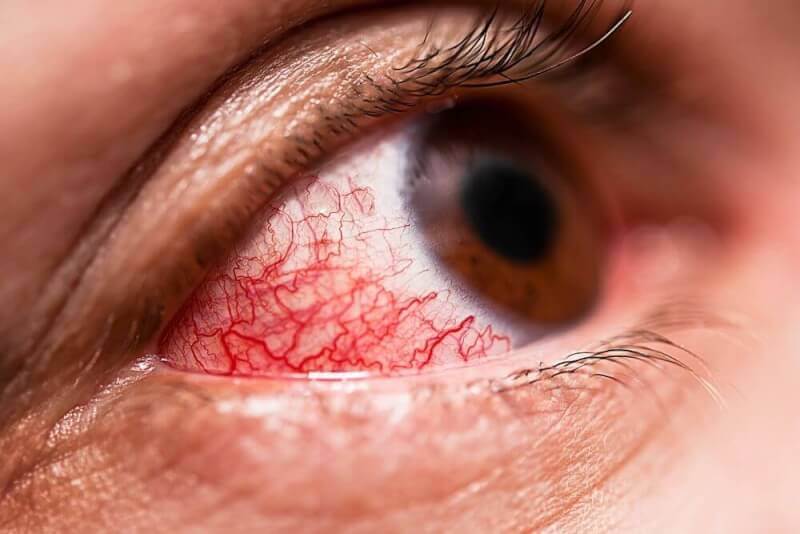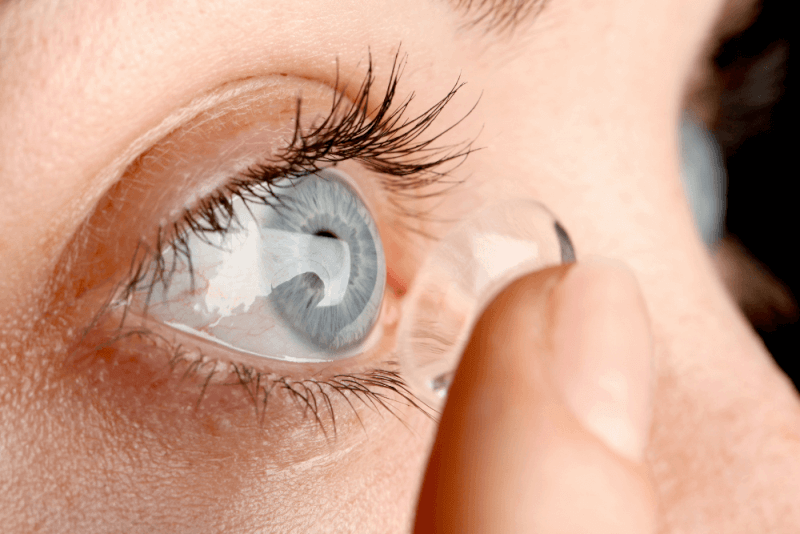30-Second Summary
- Conjunctivitis, which occurs as a result of inflammation of the transparent layer surrounding the eyeball, is caused in infants by the incomplete opening of the tear duct.
- Conjunctivitis can be caused by contact with bacteria, viruses, fungi, and chemical substances, and it may also be due to allergies.
- Bacterial conjunctivitis, which is more common in children than in adults, does not cause fever. It is especially frequent between December and April. Antibiotics are used in its treatment.
- Viruses that cause conjunctivitis include adenovirus, varicella-zoster virus, and herpes simplex virus. Viruses are the most common cause of conjunctivitis and are contagious.
Conjunctivitis, also known as pink eye, is caused by various bacteria, viruses, and allergies. Due to its contagious nature, patients should pay attention to hygiene rules and isolate themselves from society.
What is Conjunctivitis?
Conjunctivitis occurs when the transparent layer surrounding the eyeball becomes inflamed due to various causes. In newborns, it may occur because the tear duct has not fully opened. Conjunctivitis can result from contact with bacteria, viruses, fungi, and chemical substances, and can also occur due to allergies.
Types of Conjunctivitis
Conjunctivitis occurs for different reasons. The factors that cause it also contribute to its classification into various types.
Bacterial Conjunctivitis
The most common eye disease in medical practice, bacterial conjunctivitis is caused by the following bacteria:
- Staphylococcus aureus
- Streptococcus pneumoniae
- Haemophilus influenzae
- Moraxella catarrhalis
- Neisseria gonorrhoeae
- Chlamydia trachomatis
Bacterial conjunctivitis is more common in children than in adults and does not cause fever. It is especially frequent between December and April. Treatment involves antibiotics, and patients must pay close attention to hygiene to avoid spreading the infection to others.
Viral Conjunctivitis
Usually caused by the adenovirus family, viral conjunctivitis is highly contagious. In some cases, outbreaks caused by the virus can even occur. Symptoms include eye discharge, photophobia, and irritation.
Chlamydial Conjunctivitis
This type of conjunctivitis is caused by the bacteria Chlamydia, typically transmitted through sexual contact. It often occurs when genital secretions are transferred to the eye via the hands. Other causes of chlamydial conjunctivitis include:
- False eyelashes
- Loofahs
- Towels
- Other cosmetics
In rare cases, dirty swimming pools can also lead to chlamydial conjunctivitis.
Newborn Conjunctivitis
Newborn conjunctivitis occurs due to irritation, infection, or blockage of the tear duct. If caused by infection, it is particularly serious and requires immediate medical attention. Newborn conjunctivitis can be classified into the following types:
- Chlamydial conjunctivitis
- Gonococcal conjunctivitis
- Chemical conjunctivitis
- Other bacterial and viral conjunctivitis
Allergic Conjunctivitis
Allergic conjunctivitis is a non-contagious type caused by allergens. Common triggers include dust mites, pets, cosmetic products, pollen, or certain plants.
It is more common in individuals with conditions such as asthma, eczema, and hay fever. It is especially prevalent during periods of high pollen levels.
Giant Papillary Conjunctivitis
Giant papillary conjunctivitis involves swelling and redness inside the eyelid. Common causes include:
- Injury from contact lenses
- Artificial eyes
- Sutures from surgery
- Protein or other debris buildup on contact lenses
- Allergic reactions to chemicals used to clean contact lenses
Irritative Conjunctivitis
Irritative conjunctivitis occurs when foreign objects enter the eye. Although non-contagious, it can also develop from improper use of contact lenses.
Atopic Keratoconjunctivitis
Atopic keratoconjunctivitis is a chronic ocular surface inflammation seen in patients with atopic dermatitis, particularly affecting children. It affects 25-40% of patients with atopic dermatitis. In these patients, corneal sensitivity and goblet cell density in the conjunctiva decrease, though the exact cause is unknown.
Causes of Conjunctivitis
Viruses that cause conjunctivitis include adenovirus, varicella-zoster virus, and herpes simplex virus. Viruses are the most common cause of conjunctivitis and are highly contagious.
Bacterial conjunctivitis is caused by bacteria such as Neisseria gonorrhoeae, Chlamydia trachomatis, Staphylococcus aureus, Streptococcus pneumoniae, and Haemophilus influenzae. It is most commonly seen in children and is also contagious, particularly between October and April when outbreaks are frequent.
Another cause of conjunctivitis is allergies, which are typically triggered by pollen, dust, and grass. When the body encounters allergens, it produces antibodies called immunoglobulin E. These antibodies stimulate mast cells in the eyes or upper respiratory tract, causing inflammation.
The final cause of conjunctivitis is contact with a foreign substance. This substance could be chemical or physical and can scratch and irritate the conjunctiva. Irritation-related conjunctivitis typically heals within a few days.
Symptoms of Conjunctivitis
The symptoms of conjunctivitis vary depending on the cause of the inflammation and the body's response. Common symptoms include:
- Eye discharge
- Watery eyes
- Itching in one or both eyes
- Redness in one or both eyes
- Crusting of the eyelids
The crusting of the eyes is especially common in the morning due to the buildup of discharge overnight, causing the eyelashes to stick together. Patients may have difficulty opening their eyes, and gently cleaning the eyelids and lashes with a damp cloth can help alleviate this issue.
The nature of the eye discharge can provide information about the cause of the disease. In viral or allergy-induced conjunctivitis, the discharge is clear and watery, known as serous discharge.
Mucous discharge, which is stringy in nature, is caused by allergies or eye irritation. In bacterial conjunctivitis, the discharge is purulent, meaning it contains pus.
Risk Groups for Conjunctivitis
Although conjunctivitis can affect people of all ages and backgrounds, certain groups are more at risk. These risk groups include:
- People who use lenses for extended periods
- Those in environments where viral and bacterial infections spread quickly, such as daycares, schools, and offices
- People with allergies
How is Conjunctivitis Diagnosed?
The diagnosis of conjunctivitis is usually made based on patient complaints and symptoms. Additionally, questions about whether there are other conjunctivitis cases in the patient's surroundings, when the symptoms began, and if the patient has allergies help confirm the diagnosis. In rare cases, a culture test may be performed for diagnosis.
Treatment Methods for Conjunctivitis
Conjunctivitis treatment focuses on alleviating the patient's symptoms. Artificial tears, cleaning the eye, and applying warm or cold compresses are recommended. Patients should avoid wearing lenses and eye makeup during the illness.
Treatment for Viral Conjunctivitis
Medication is usually unnecessary for viral conjunctivitis. Symptoms typically start in one eye and spread to the other within a few days, with the condition resolving on its own. However, if herpes virus is the cause, antiviral agents may be used.
Treatment for Bacterial Conjunctivitis
Antibiotics are used to treat bacterial conjunctivitis. Antibiotics not only help the condition heal faster but also prevent its spread and worsening symptoms. Antibiotic eye drops are typically used for adults, while ointments are preferred for children due to ease of use.
Treatment for Allergic Conjunctivitis
Eye drops are used to alleviate the symptoms of allergy-induced conjunctivitis. Antihistamine eye drops may also be used to reduce the immune system's response to allergens.
Medication for Conjunctivitis
Depending on the cause of conjunctivitis, different medications may be prescribed to patients. Some medications eliminate the cause of the conjunctivitis, while others help alleviate the symptoms.
Artificial Tears
Artificial tears are used to relieve the dryness caused by chemical, allergic, viral, or bacterial conjunctivitis. They help moisten the eye and remove allergens from the eye.
Antibiotics
Antibiotic eye drops are prescribed for bacterial conjunctivitis. The frequency and dosage are adjusted by the doctor. Typically, a 5-7 day course is sufficient. Although well-tolerated by most, some patients may experience eye irritation, leading to increased itching and redness.
Antihistamines
Antihistamines are used to treat allergic conjunctivitis and can be applied as eye drops or taken orally. These medications reduce itching and inflammation, and can also be used for conjunctivitis caused by chemical irritants.
Anti-Inflammatory Drugs
Non-steroidal anti-inflammatory drugs (NSAIDs) help relieve the itching and inflammation caused by conjunctivitis. They are usually applied as eye drops, and although they may cause a burning sensation after application, this sensation typically fades quickly.
Topical Corticosteroids
These medications are prescribed in severe cases of conjunctivitis, particularly after a chemical injury. Although effective in reducing inflammation, they can cause side effects such as cataracts, blurred vision, and increased eye pressure.
Mast Cell Stabilizers
These medications are used preventively rather than for immediate relief and help prevent allergic conjunctivitis. They are recommended for people with seasonal allergies or those who are allergic to contact lenses.
How to Prevent Conjunctivitis
Viral and bacterial conjunctivitis is highly contagious, spreading easily from person to person. To prevent outbreaks, patients should follow certain precautions:
- Do not share eye makeup products with others
- Do not share towels or tissues with others
- Avoid using public pools or baths
- Clean glasses regularly
- Discontinue lens use as advised by your doctor
- Change pillowcases and sheets frequently
- Clean eye discharge with a clean cloth
- Avoid touching your eyes with your hands
- Wash your hands frequently with soap for at least 20 seconds
- Use hand sanitizers with at least 60% alcohol if soap is unavailable







